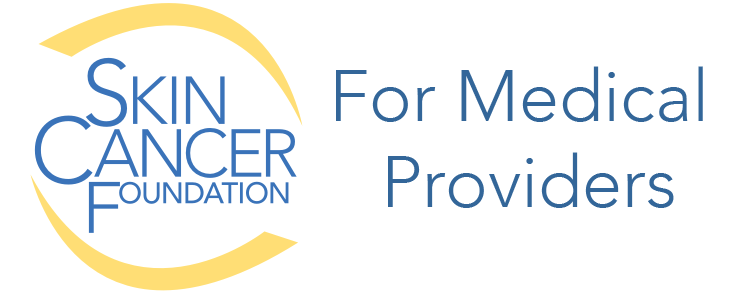
Advances in Therapy for Cutaneous Melanoma
2019, Vol. 37, No. 2
Progress in the Treatment of Advanced Melanoma: Where We Are Now, and Why the Future Is So Promising
Immediately following the 2019 annual conference of The American Society of Clinical Oncology (ASCO) in Chicago, Mark Teich, Skin Cancer Foundation scientific director, interviewed two key presenters, James P. Allison, PhD, and Jeffrey Weber, MD, PhD. We trust that you’ll enjoy and learn something valuable from the resulting Q&As that follow with these men, who are giants in the field.
In This Issue
From the Editors
This year, The Skin Cancer Foundation is celebrating its 40th birthday. It’s an important milestone for the Foundation, reflecting on four decades of invaluable work. Since its start in 1979, along with its many other endeavors, the SCF has championed revolutionary strategies for the prevention, detection, diagnosis and treatment of melanoma and other skin cancers that ultimately became state of the art.
The Melanoma Letter has been an important part of this effort since it was launched in 1982. It has given a forum to the world’s top clinicians and investigators to distill the key elements of their work for dermatologists and other medical professionals across the U.S. In 1992, when Donald Morton, MD, pioneered the sentinel node biopsy technique for the early detection of melanoma metastases to the lymph nodes, we worked closely with him to introduce it widely that year in our pages. We periodically reported the ongoing research on it, until it was proven to be tissue-saving and lifesaving — and embraced by most dermatologists and oncologists. We frequently wrote about dermoscopy, an early detection tool for melanoma, when many considered it a fringe technique, and today it is a mainstay in dermatologists’ offices. When John Kirkwood, MD, developed the first FDA-approved adjuvant treatment for high-risk stage II and III melanoma, we headlined the technique in The Melanoma Letter, and the SCF sent him on tour around the U.S. to discuss its impact. We presented early research on immunotherapies and targeted therapies that were later FDA-approved, and today they form the backbone of treatment for advanced melanoma, extending and saving the lives of patients whose cases once would have been hopeless.
Mark Teich, the SCF’s scientific director, has been with the Foundation for 27 of its 40 years, since 1992, and has been the staff editor of The Melanoma Letter ever since. We have worked with him as editor-in-chief and associate editor on this award-winning publication for more than two decades. So, we have certainly achieved continuity along with what we believe is a consistently high standard of new, accurate and vital information for you, our readers.
For the fourth straight year, Mark attended the American Society of Clinical Oncology’s annual meeting, and it has been a recent tradition in The Melanoma Letter for him to bring back findings from the front. This issue features Q&As that he did with two of the presenters, who happen to be leaders and icons of melanoma research, Jeffrey Weber, MD, PhD, and James P. Allison, PhD. We think you’ll find something fascinating and valuable in these interviews, which illuminate the state of the art and the future of treatment for advanced melanoma.
Allan C. Halpern, MD • Editor-in-Chief
Ashfaq A. Marghoob, MD • Associate Editor
